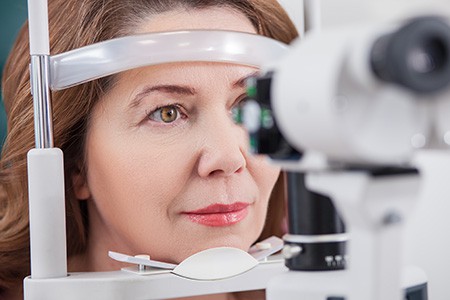
Our eyes are complex organs with many components, all of which must work in unison to produce sharp vision. Impairment or damage of some of these components can lead to vision disorders. Some disorders are easily treated, while others have no known cure. Regular visits to visionboston.com can help you maintain the health of your eyes.
Refractive Errors
Refractive errors are a common type of vision disorder that makes it difficult to see clearly. They occur when the eye’s shape prevents light from focusing correctly on the retina, which is the light-sensitive layer of tissue in the eye.
Common types of refractive errors include:
Nearsightedness: Also known as myopia, those who are nearsighted typically have issues seeing clearly at a distance, but objects up close appear sharp. Nearsightedness tends to run in families and is often the result of an eye that is too long. This condition usually develops in childhood and begins to stabilize between ages 20 and 40. Nearsightedness can be diagnosed with a routine eye exam, and glasses, contacts, and vision correction surgeries are often used to treat the disorder.
Farsightedness: Farsightedness, referred to as hyperopia, can be thought of as the opposite of nearsightedness. Where nearsightedness causes objects at a distance to appear blurry, those who are farsighted but often struggle to make out words and objects that are nearby or far away. Farsightedness often runs in families and is usually present at birth. The condition is easily treated with prescribed eyeglasses or contact lenses, or vision correction procedures.
Astigmatism: Astigmatism occurs when either the cornea or the lens is abnormally curved. This condition often occurs in addition to nearsightedness and farsightedness. Symptoms of astigmatism include blurry vision, eye strain, headaches, and the tendency to squint to make objects appear sharper. Blurry vision caused by astigmatism is treated with contacts, glasses, or vision correction procedures.
Age-Related Macular Degeneration
Age-related macular degeneration (AMD) is an eye disorder that results in a decline in central vision. There are two types of AMD:
- Dry AMD, which is when the macula starts to thin over the course of time, eventually compromising central vision.
- Wet AMD, which is less common but causes damage faster, occurs when blood vessels begin to generate under the macula, leading to fluid leakage and damage to the macula. Like dry AMD, wet AMD leads to loss of vision in the center of the visual field.
Cataracts
The clouding of the lens of the eye is known as a cataract. It can affect vision and quality of life, making it difficult to participate in regular activities like reading, driving, or seeing faces clearly. Most cataracts tend to develop over time with no negative effect on sight. For cataracts that impair vision, safe and effective cataract surgery is offered at visionboston.com to restore the health of the eyes.
Diabetic Retinopathy
Diabetic retinopathy is a common complication of diabetes. This condition is characterized by gradual damage to the blood vessels in the retina and usually impacts both eyes. Maintaining safe blood sugar levels and managing diabetes can help prevent this condition.
Eye Disorder Treatment at Kornmehl Laser Eye Associates
Dr. Ernest W. Kornmehl and his staff are committed to helping you restore and maintain excellent vision. Don’t delay seeking treatment for eye disorders. Schedule a consultation at Kornmehl Laser Eye Associates by calling (877) 870-2010.